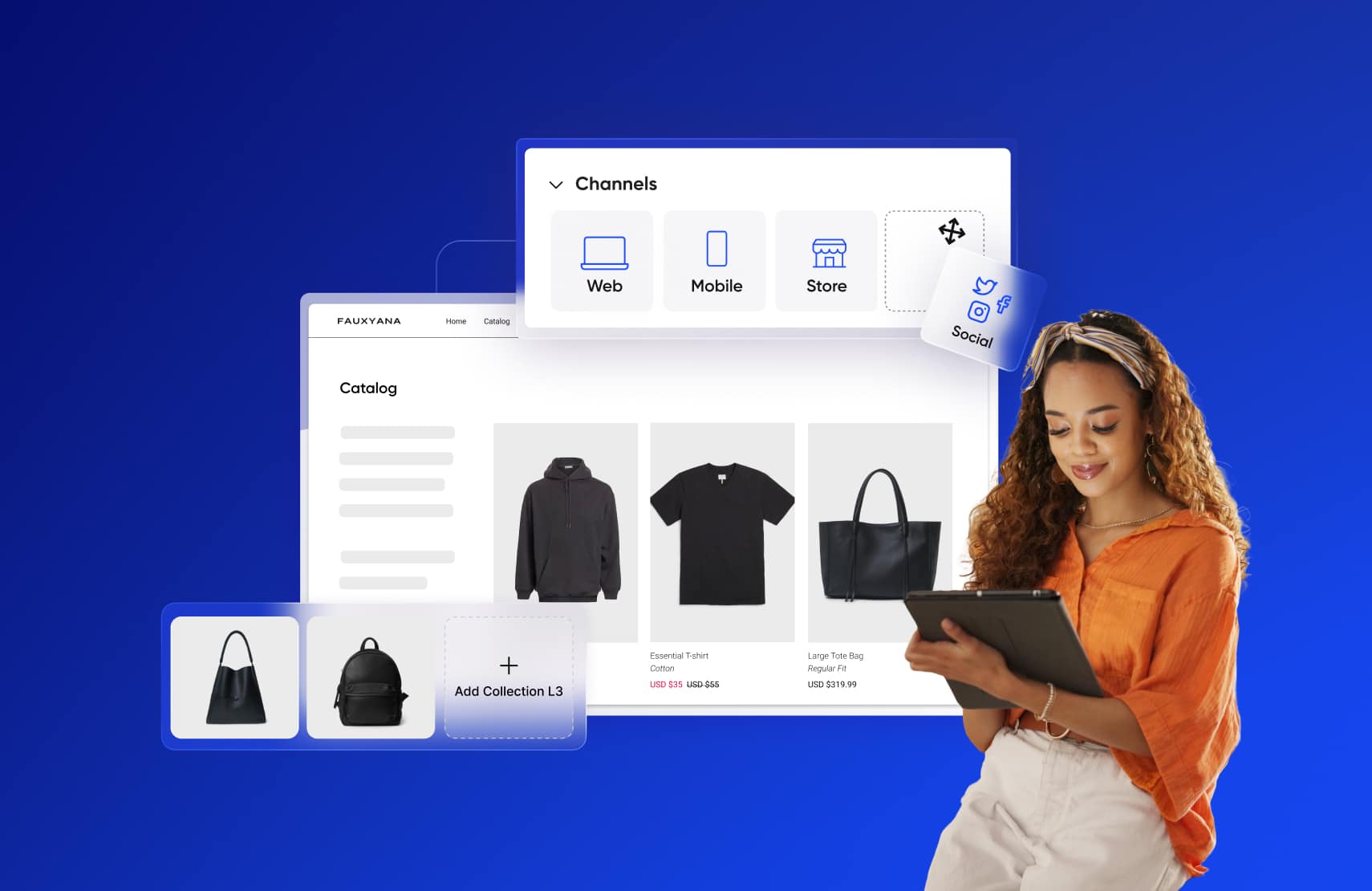5 Reasons Why Your Omnichannel Commerce Strategy Needs a Modern Product Catalog

Omnichannel commerce: sounds fancy, but it is a necessity for brands to stay relevant today. If your product catalog wasn’t built for multiple channels and flexible merchandising options, it’s time to modernize.
Product catalogs are the foundation of the customer experience
A major obstacle brands face on their way to omnichannel commerce glory is the product catalog. More specifically, challenges arise when product catalogs are based on or tethered to legacy systems and not built to function around the demands of a modern retail ecosystem.
Managing merchandise operations is a challenge for every retailer, and those challenges multiply as retailers grow in size. Enterprise retailers are often overseeing multiple brands, with multiple product lines, each with their own unique product attributes. You don’t have to be a math prodigy to understand that that equates to a lot of possible product data permutations.
To make matters worse, the legacy enterprise resource planning (ERP) systems commonly used as the source of truth for product catalogs are often wildly complex and interconnected. What may present itself as a small product catalog update can actually turn into a massive project that requires costly resources, downtime, and developers.

And therein lies the problem of how product catalogs relate to omnichannel commerce. If you can’t keep every product variance up to date, easily, and without extra overhead from developers, you won’t be able to deliver the experiences the modern customer has grown to expect. Customers will not wait hours for you to fix product information or update a product page with the right image, for example. If it’s not correct when they first see it, they will take their attention — and wallet — elsewhere.
5 reasons why product catalogs are crucial to omnichannel commerce success
#1. Maintaining and updating product information across channels
Customers want to trust what you say about the products you stock, regardless of which channel they’re shopping in. Having data that conflicts across channels can send customers to a competitor or degrade the overall customer experience, especially as your product catalog grows.

#2. Ensuring data quality and accuracy in product catalogs
Inaccurate, out-of-date, incomplete, or missing information about a product is a sure way to impact the customer experience negatively. But data quality goes beyond accuracy, with customers expecting completeness, timeliness, fitness for purpose, and more. Poor quality and inaccurate product catalog data can lead to customers purchasing the wrong products, too, which increases returns, impacts profits, and increases costs.

#3. Managing products across multiple channels
A robust and accurate product catalog is your single source of truth for product information. Spreading product data across systems and databases creates a complex web of data integrations while risking inconsistencies across systems. That stresses merchandisers and category managers while further eroding the customer experience.


#4. Complexity of product details and variations
Many products today are available in a variety of colors, sizes, levels, and other options. As product catalogs grow, so does the data and product management complexity. Every challenge listed above can be multiplied by the number of product variations to cause even more headaches.

#5. Limitations of traditional Product Information Management (PIM) systems
It’s no secret that legacy PIM systems can fail to deliver the capabilities omnichannel retailers need these days. Rigid taxonomies and inputs, cumbersome data access, lack of support for modern and interactive data like videos and other rich media, and analytics gaps are just a few of the issues that can arise when relying on a traditional PIM system as a product catalog for omnichannel commerce.


fabric Product Catalog: a central source for omnichannel commerce
The five problems detailed above affect customers’ purchasing decisions and return rates. More than half (56%) of consumers say the reason they returned an item bought online is because it didn’t match its description, according to a survey by Power Reviews.
Modern commerce requires a modern solution. If you can relate to any of the above challenges, it’s worth learning how much easier — and profitable — omnichannel commerce can be with help from fabric.
fabric Product Catalog is a commerce-first approach to product data that centralizes, organizes, and delivers product information to any digital channel. It provides retailers with the speed and flexibility to deliver the right product information to customers on every channel as customers expect. It’s also a powerful center for merchants to onboard new products, manage categories, and build winning customer experiences in every channel.
But that’s not all.
- It’s fast. You can deliver high-quality product information across channels from your digital storefront to social to POS, and respond to surges without downtime.
- It’s flexible. With a fully configurable user experience, you can organize products and their attributes into an unlimited set of combinations to improve conversions, reduce return rates, and more.
- It’s intelligent. Automatically categorize your SKUs into collections the way you need using flexible business rules and custom attributes.
- It’s integrated. Bring all your data from multiple sources into a centralized view, whether it’s from your ERP, marketplace, or homegrown system.
It’s scalable. Get up and running in weeks, and quickly expand with fabric’s full platform of core commerce services that can be adopted individually — from pricing and promotions to inventory and orders.
Let Product Catalog be your modern, omnichannel commerce advantage
Embrace modernity and step into today’s world of fast-paced omnichannel commerce.
Check out our recent press release to learn more about fabric Product Catalog and start your journey to modern, omnichannel commerce.

Digital content editorial team @ fabric